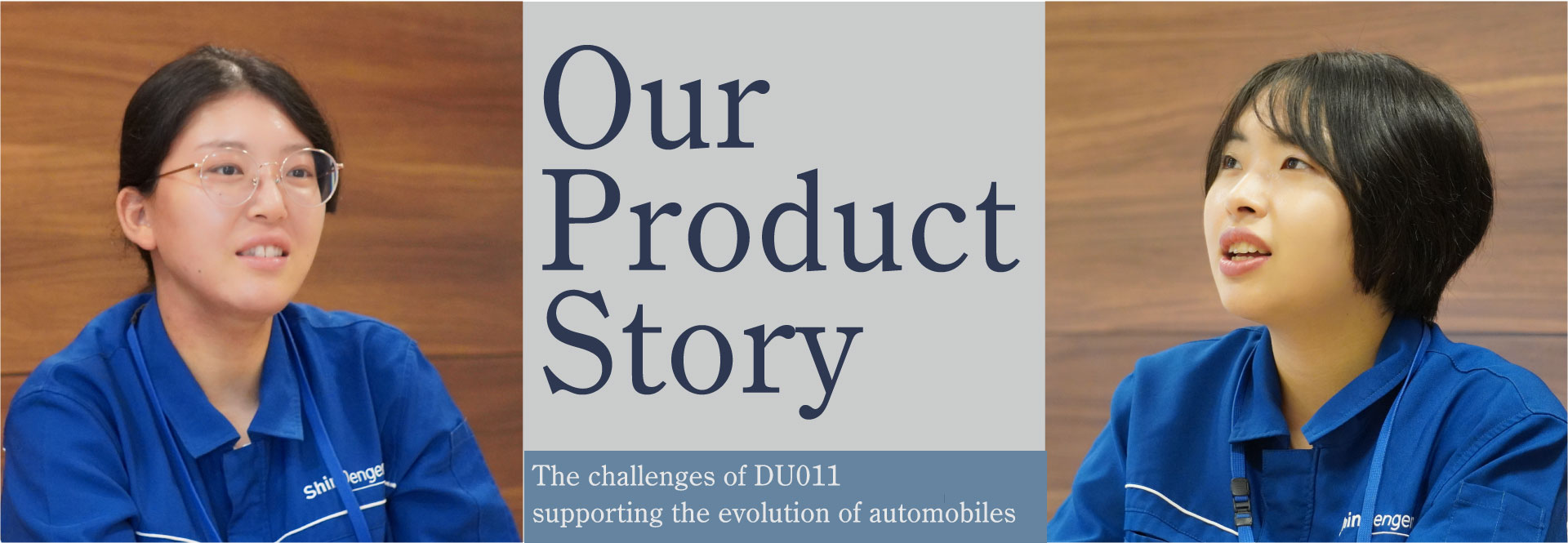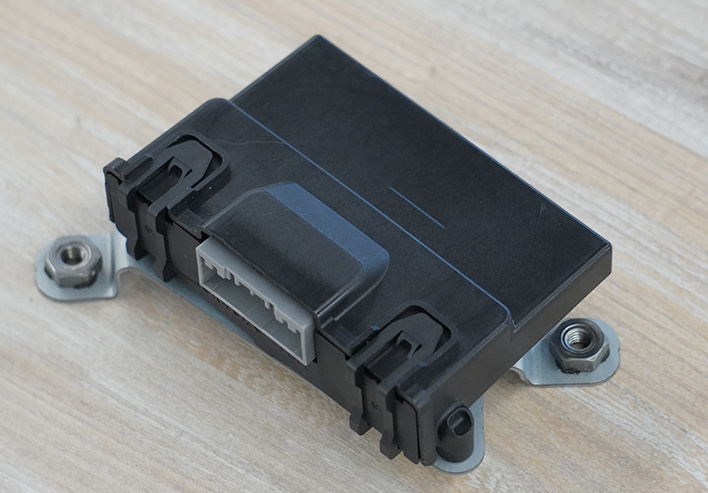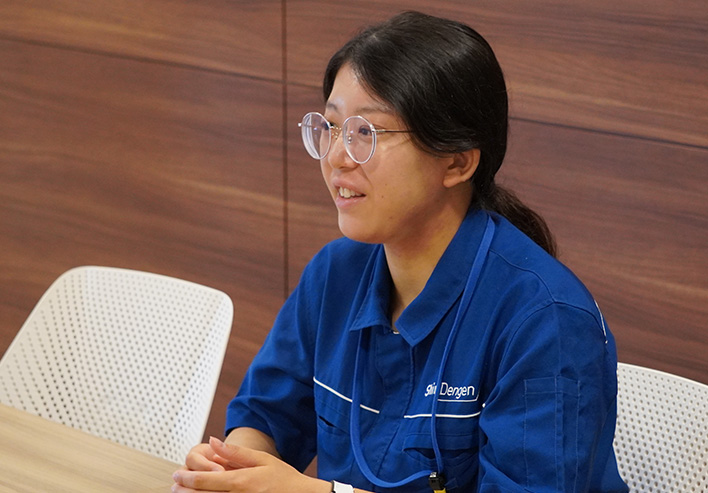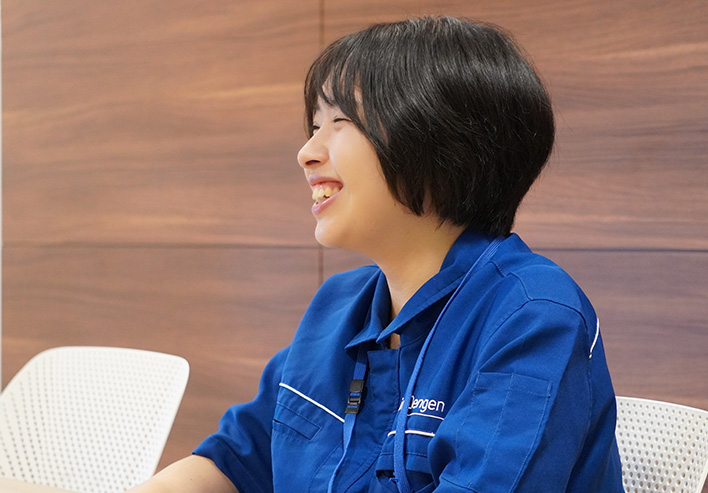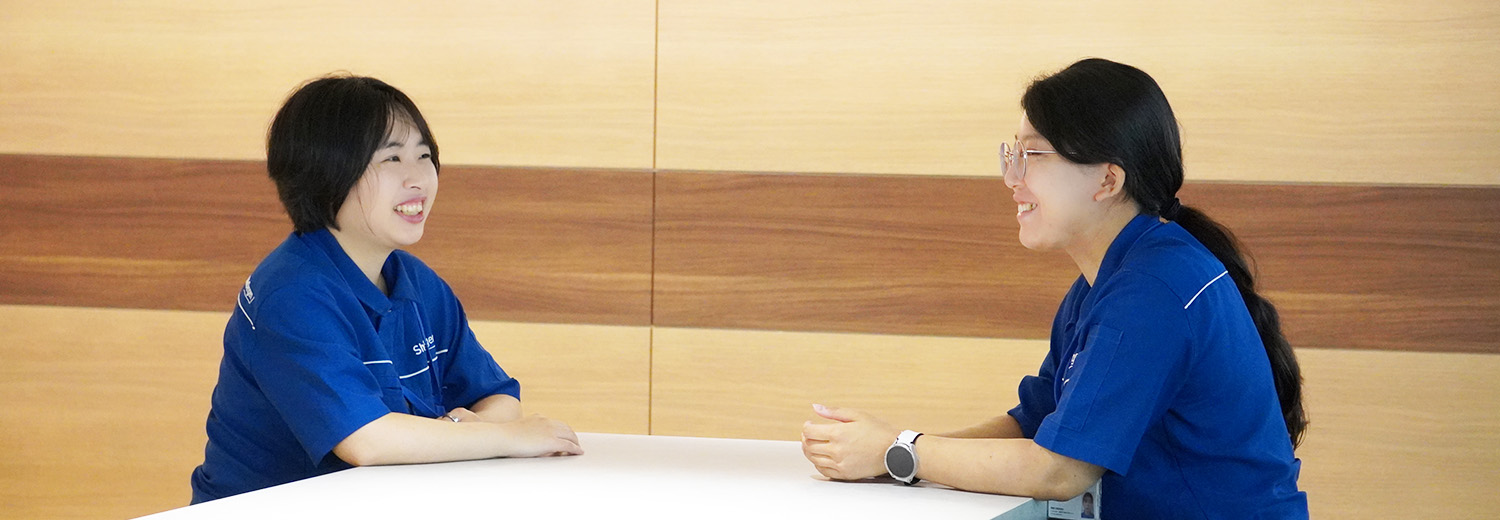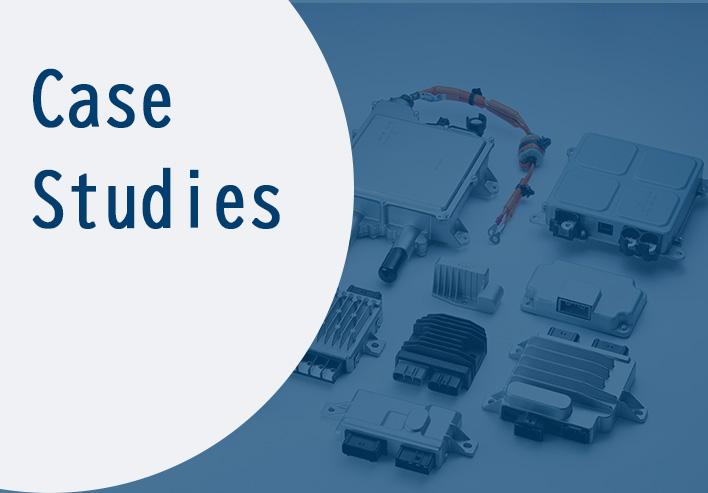- TOP
- Lineup
- Our Product Story
- The challenges of DU011 supporting the evolution of automobiles
The challenges of DU011 supporting the evolution of automobiles
(Left) Ayane Kitazato
Joined the company in 2020. After joining the company, she was assigned to the car electronics department, where she was involved in the circuit design for DC/DC converters, including SPEC evaluation, and is currently working on ECU design.
(Right) Nami Ando
Joined the company in 2017. After working on general-purpose products as a structural designer of car electronics, she took up her current position. She handles a wide range of work, from structural design to evaluation.
With the advance of high-functionality features such as autonomous driving, it is hoped that in the future, cars will go beyond the category of being a means of transportation and become comfortable spaces for work, games, and reading. Our company develops and manufactures ECUs that control dampers, which absorb vibrations during vehicle operation and reduce vehicle sway. This ECU has a function that suppresses the sinking of the vehicle body in curves, stabilizes driving, and allows you to ride comfortably without feeling the unevenness of the road surface.
We will introduce the development struggles of our up-and-coming engineers, who were particular about every detail, as they worked on the latest model ECUs, the DU011 series.
ECUs to meet diverse needs
Kitazato:
Generally, when you pursue a comfortable ride in a car, there are compromises, such as a decrease in driving performance and poor vehicle behavior. These ECUs aim to provide the best control to eliminate these problems. At the same time, in order to realize a decarbonized society, it is necessary to respond to different systems and adjust the amount of control for each vehicle, as well as to customize the design for various installation environments on a vehicle-by-vehicle basis. Since there are many requests for derivative models, we are developing multiple models simultaneously while maintaining quality.
Ando:
The DU011 series has functions that improve the ride quality of your car. However, as they are additional functions that makes the in-car environment more comfortable, the development period comes after the development of the basic performance of the car, such as “moving” and “stopping”, and there are often many restrictions on the installation space and attachment points. In order to install the ECU in the vehicle, a bracket is attached to the main ECU case, but it is only natural that the installation position will differ depending on the vehicle model, and the bracket shape will often be unique to each model.
ECU design and verification according to the installation environment
Kitazato:
The DU011 series incorporates a design that allows for flexibility in design changes even after mass production and is intended to meet a wide range of needs. For example, as the use of IoT in automobiles has progressed, cyber security measures have become necessary even for ECUs that perform software control. Although it has been in the spotlight in recent years, we were already anticipating the demand for it, so we selected components that could be mounted from the beginning of development. As we had designed the product with an eye to the future, even when the decision to add specifications was officially made during development, we were able to smoothly incorporate the specification changes into the product.
Kitazato:
If there is no need to change the circuit, the number of items to be verified can generally be reduced compared to when a new circuit is considered. On the other hand, even if there are few changes in terms of individual products, the surrounding environment will change if the installation position is different. As the environment differs, the impact of noise on the product will also differ, so there is a possibility that there will be a difference in the performance of the ECU. For this reason, we make a point of listening carefully to our customers' specifications regarding the installation environment, etc., and we determine the verification items for each derivative model.
In order to provide safe products with improved quality, we do not just make random evaluations, but instead dig deeper into the verification of changes, and we make a clear distinction between items that have little impact and those that have a large impact focusing in particular on checking the safety of items that have a large impact so that we can make a multi-faceted judgment. We hold discussions from the perspective of each person in charge of the circuit, structure, and software, and we also make sure that we are all on the same page with the customer regarding the verification items.
A month of hard work to meet the vibration requirements
Ando:
When the mounting position changes and the shape of the bracket is altered, we always carry out durability tests such as vibration tests. However, if the bracket shape of the initial layout, which has not been fully verified, is tested as it is, it may not be durable. If that happens, we have to go back to the design stage, so we first perform simulations to determine the strength. In one development, we conducted a simulation based on the initial layout drawings we received from the customer and found that the vibration requirements were not being met. In order to meet the vibration requirements, it would be effective to increase the number of attachment points and to consider the balance of the center of gravity, but when we conducted a survey of the installation environment in order to make changes to the shape, there was almost no room for making changes to the space. We examined the shape that would be most suitable for the requirements based on the surrounding environment and made adjustments, but when we shared this shape with the bracket manufacturer who would supply the parts, we received a request to review the dimensional tolerances as it would be difficult to manufacture as is. It was difficult to decide on the shape of the product, as we had to satisfy the customer's specifications while also taking on board the opinions of the people involved in the production. After that, we visited the customer, and after repeatedly explaining the design to the manufacturer and adjusting the details, we were able to finalize the specifications after about a month. Once the bracket shape was finalized, we were able to see the path ahead of us and reach the finish line.
New challenges in the development of new models
In this way, while verifying each model, we proceeded with the development of the DU011 series, which is currently progressing simultaneously, and the number of derivative models has increased to nearly 20. Development of a new model, a further evolution of the DU011 for which both are responsible, has also started, with mass production scheduled for 2026.
Kitazato:
I am currently in charge of more than 10 models under development, and I am working every day to be able to manage multiple models simultaneously. There is a period of time coming up when development events will be concentrated, so we are working closely with our customers and design team to control the schedule and ensure that development progresses smoothly.
Ando:
I want to increase my experience as an engineer and develop my judgment abilities. I want to keep challenging myself with new things and be able to make proposals that go beyond what customers want.
Editor's postscript
Once development of the DU011 series is complete, the drawings are sent overseas where they are manufactured by our group companies and then installed in cars that are driven all over the world. The products developed by our engineers, who listen to the ever-evolving needs of our customers, are also contributing to providing a comfortable life for people all over the world.
